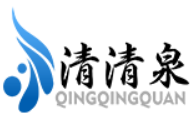
- Qingqingquan
- Shandong
- 20 days
- 300 units per month
Discover how Zero Liquid Discharge (ZLD) transforms textile dyeing with 100% wastewater recycling. Learn benefits, technologies & compliance advantages
Zero Liquid Discharge (ZLD) for Textile Dyeing: A Sustainable Water Management Solution

Introduction
The textile industry is one of the largest consumers of water, with dyeing processes alone requiring vast amounts of freshwater while generating highly polluted wastewater. Zero Liquid Discharge (ZLD) has emerged as a sustainable solution, ensuring zero wastewater discharge by recovering and reusing water while extracting salts and other byproducts.
In this article, we explore how ZLD works in textile dyeing, its benefits, key technologies, and why it’s becoming a must-have compliance and sustainability strategy for textile manufacturers worldwide.
What is Zero Liquid Discharge (ZLD) in Textile Dyeing?
Zero Liquid Discharge (ZLD) is a wastewater treatment process that eliminates liquid waste by:
• Recycling & reusing treated water.
• Recovering salts and chemicals for reuse.
• Minimizing environmental impact by preventing polluted discharge.
ZLD is particularly crucial for textile dyeing because the wastewater contains toxic dyes, heavy metals, and high TDS (Total Dissolved Solids), making conventional treatment insufficient.

Why is ZLD Essential for the Textile Industry?
1. Strict Environmental Regulations
Many countries now enforce ZLD compliance to prevent water pollution. For example:
• India’s Central Pollution Control Board (CPCB) mandates ZLD for textile units in key clusters.
• EU’s REACH and BAT (Best Available Techniques) encourage ZLD adoption.
2. Water Scarcity & Cost Savings
Textile dyeing consumes 100-150 liters of water per kg of fabric. ZLD reduces freshwater demand by 90-95%, cutting costs and conserving resources.
3. Corporate Sustainability Goals
Brands like Nike, H&M, and Levi’s demand sustainable practices from suppliers. ZLD helps manufacturers meet ESG (Environmental, Social, Governance) targets and attract eco-conscious buyers.
How Does ZLD Work in Textile Dyeing?
A typical ZLD system involves multiple stages:
1. Primary Treatment (Pre-Treatment)
• Removes suspended solids, oils, and organic matter using:
• Screening & sedimentation
• Coagulation-flocculation

2. Secondary Treatment (Biological Processes)
• Uses aerobic/anaerobic digestion to break down biodegradable pollutants.
3. Tertiary Treatment (Advanced Filtration)
• Ultrafiltration (UF) & Reverse Osmosis (RO) remove dissolved salts and dyes.
4. Evaporation & Crystallization (Final ZLD Stage)
• Multiple Effect Evaporators (MEE) or Mechanical Vapor Recompression (MVR) evaporate water, leaving behind solid salts.
• Crystallizers extract reusable salts (e.g., sodium sulfate).
5. Water Reuse
• Treated water is recycled back into dyeing processes.

Key Technologies Used in ZLD for Textile Dyeing
| Technology | Purpose |
|---|---|
| Reverse Osmosis (RO) | Removes dissolved salts & dyes |
| Electrodialysis (ED) | Separates ions for salt recovery |
| MEE (Multiple Effect Evaporators) | Concentrates brine for crystallization |
| MVR (Mechanical Vapor Recompression) | Energy-efficient evaporation |
| Solar Evaporation Ponds | Low-cost option for small-scale units |
Benefits of ZLD for Textile Manufacturers
Benefits of ZLD for Textile Manufacturers
✅ Compliance with environmental laws (avoid penalties & shutdowns)
✅ Reduced freshwater consumption (lower operational costs)
✅ Recovery of salts & chemicals (additional revenue stream)
✅ Enhanced brand reputation (meeting global sustainability standards)
✅ Future-proofing against stricter regulations
Challenges & Solutions in ZLD Implementation
❌ High Initial Investment
Solution: Government subsidies & long-term ROI justify costs.
❌ Energy-Intensive Processes
Solution: Use solar-powered ZLD or waste heat recovery.
❌ Sludge Management
Solution: Convert sludge into bricks or construction materials.

Future of ZLD in Textile Dyeing
With water scarcity worsening and regulations tightening, ZLD is transitioning from an optional upgrade to an industry standard. Innovations like:
• AI-driven ZLD optimization
• Hybrid solar-desalination systems
• Membrane distillation
…will make ZLD more affordable and efficient.
Conclusion: Is ZLD the Future of Sustainable Textile Dyeing?
Absolutely! Zero Liquid Discharge (ZLD) is no longer just an environmental obligation—it’s a competitive advantage for textile manufacturers. By adopting ZLD, companies can:
✔ Reduce water dependency
✔ Cut long-term costs
✔ Stay ahead of regulations
✔ Boost sustainability credentials
Is your textile unit ready for ZLD? Invest now to secure a greener, compliant future!









































